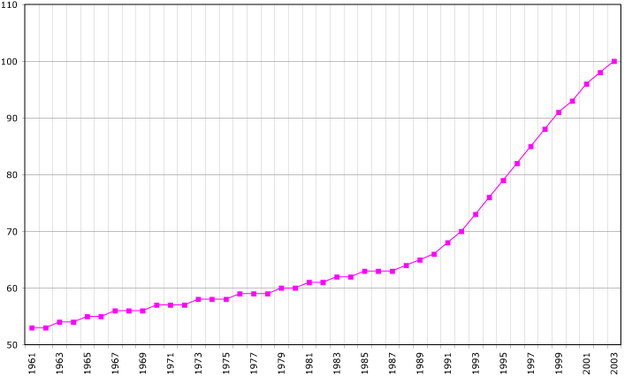 |
This is a file from the Wikimedia Commons. Information from its description page there is shown below.
Commons is a freely licensed media file repository. You can help.
|
 |
This graph image could be recreated using vector graphics as an SVG file. This has several advantages; see Commons:Media for cleanup for more information. If an SVG form of this image is already available, please upload it. After uploading an SVG, replace this template with {{ vector version available|new image name.svg}}. |
Subject : evolution of demography in Aruba ((1961-2003)
Source : Data FAOSTAT, year 2005 : http://faostat.fao.org/faostat/help-copyright/copyright-e.htm (last updated 9th february 2005)
Y-axis : Number of inhabitants in thousands.

 |
This file is licensed under the Creative Commons Attribution 2.0 Generic license. |
|
|
|
- You are free:
- to share – to copy, distribute and transmit the work
- to remix – to adapt the work
- Under the following conditions:
- attribution – You must attribute the work in the manner specified by the author or licensor (but not in any way that suggests that they endorse you or your use of the work).
http://creativecommons.org/licenses/by/2.0 CC-BY-2.0 Creative Commons Attribution 2.0 truetrue
|
File usage
The following pages on Schools Wikipedia link to this image (list may be incomplete):
SOS Children has brought Wikipedia to the classroom. SOS Childrens Villages cares for children who have lost their parents. Our Children's Villages give these children a new home and a new family, while a high-quality education and the best of medical care ensures they will grow up with all they need to succeed in adult life. There are many ways to help with SOS Children's Villages.



